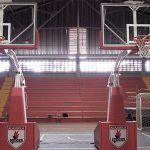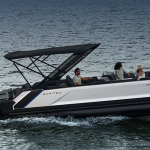Puma looks to be a victim of its own success if the numbers posted in the latest quarterly report are any indication. After posting a 48% increase in sales and a 60% increase in futures backlog in the year-ago period, Pumas meteoric growth rates settled back down to earth in the latest quarter with a still-very-robust 37.8% increase (43.5% currency-neutral) in third quarter sales while futures backlog increased 28.8%, or 34.4% currency-neutral.
Total quarter-end backlog numbers were up 18% for Q4, but up 34% for the first half 0f 2004. Excluding the Japan business that was not part of the numbers a year ago, futures backlog was up 22.1% on a currency-neutral basis or up 16.5% in Euros. The sales and backlog growth still easily outpaced all other athletic footwear and apparel brands with the exception of K-Swiss, which has been on tear of its own the last year. The slowing growth stats were also highlighted by the Americas backlog number, which rose just 15.2% on a currency-neutral basis, but declined 4.2% in Euros.
At issue is Pumas perceived long-term strength in the U.S. business that makes up roughly 85% to 90% of the Americas number. The negative backlog number in Euros — which was up 67.3% in euros in the year-ago period, up 48% at year-end, up 33.4% at the end of Q1 2003, and increased 30.8% at the end of the second quarter — was the subject of some discussion and debate within the analyst community at week-end.
Some analysts believe that the root of the issue is with the Foot Locker business in the U.S., and Pumas decision not to sell the euro active Sports Lifestyle product into the mall chains. The hypothesis is that Foot Locker pulled back on the brand because Puma wouldnt give them more. To support this position, one would have to assume that Pumas growth over the last year has been due to growth in the mall. It has not.
Puma is now reportedly Foot Lockers second largest vendor in Europe and much pressure has reportedly been brought to bear to secure a broader assortment for the U.S. stores. Puma has stuck to its “controlled growth” policy in the U.S., allowing the mall retailers to purchase the companys Sports Heritage category, but has been smart about over-selling the faster lifestyle fashion product into the mall segment.
As retro has fallen from favor, the styles Puma made for the mall have apparently slowed along with the retro trend.
Pumas success has been with the more sophisticated Euro-active looks. The Euro-active styles (low ride, narrow lasted silhouettes, often in bright colors) are far too forward for the current mainstream — and Main Street– customer. These looks need to be worn with narrow leg, flat front pants, which have not yet caught on with the mall — and mass — consumer. The mall-based retailers have not been successful with these fashion looks and Puma has rightly been reluctant to sell them, committed instead to preserving the fashion position Puma owns with the better shoe boutiques. The category is still mostly focused on the edgier retailers that have the consumer — and are primarily located within 10 miles of each coast — that “get” the fashion trend.
In an exclusive interview with Sports Executive Weekly, Pumas VP of U.S. Sales Tom Morgan said that growth has always been “across the board” and that the company isnt for quick hits or big spikes, but is “in this for the longevity”. Morgan pointed to other changes in the U.S. business that caused some of the backlog shift.
Morgan said that the futures backlog was also impacted by a maturing holiday business that is becoming “fairly meaningful” for the company, especially in apparel. The apparel growth is coming from the better department stores and “sports lifestyle” chains that want Holiday deliveries to commence on 9/15 or 9/25. This would explain a bit of the very nice Q3 numbers.
The company indicated that 5% of Q3 growth came from early shipments, and that came out of the Q4 numbers. One analyst indicated that the U.S. backlog numbers would have increased 20% if not for early Q4 order shipment. The company said that Q4 shipments should be up in the lower end of the double-digit range.
Puma reported that third quarter sales in the U.S. were up by 46.2% to $69.6 million when reported in U.S. Dollars. The weaker dollar reflected a Euro growth rate of 26.8%.
Pumas total Q3 business in the Americas increased 53.1% on a currency-neutral basis.
For the year, Puma sees total worldwide sales growth of 30% in Euros or above 40% on a currency neutral basis and hinted at continued double-digit growth in the U.S.
Gross margin, which rose above 50% for the first time, is expected to “achieve approximately 48% or slightly above” for the year. The gain was expressed as “primarily due to the strong Euro”.
Apparel has see the biggest improvement in gross margin, gaining 760 basis points to 48.1%. Footwear improved by 610 basis points to 51.5%. Accessories gained 430 basis points to 49.2%.
>>> While there are some signs that the Euro active fashion is beginning to get some traction in less sophisticated markets, Puma will need to make a footprint in the more conventional performance end of the market in order to realize its full potential in the U.S…















